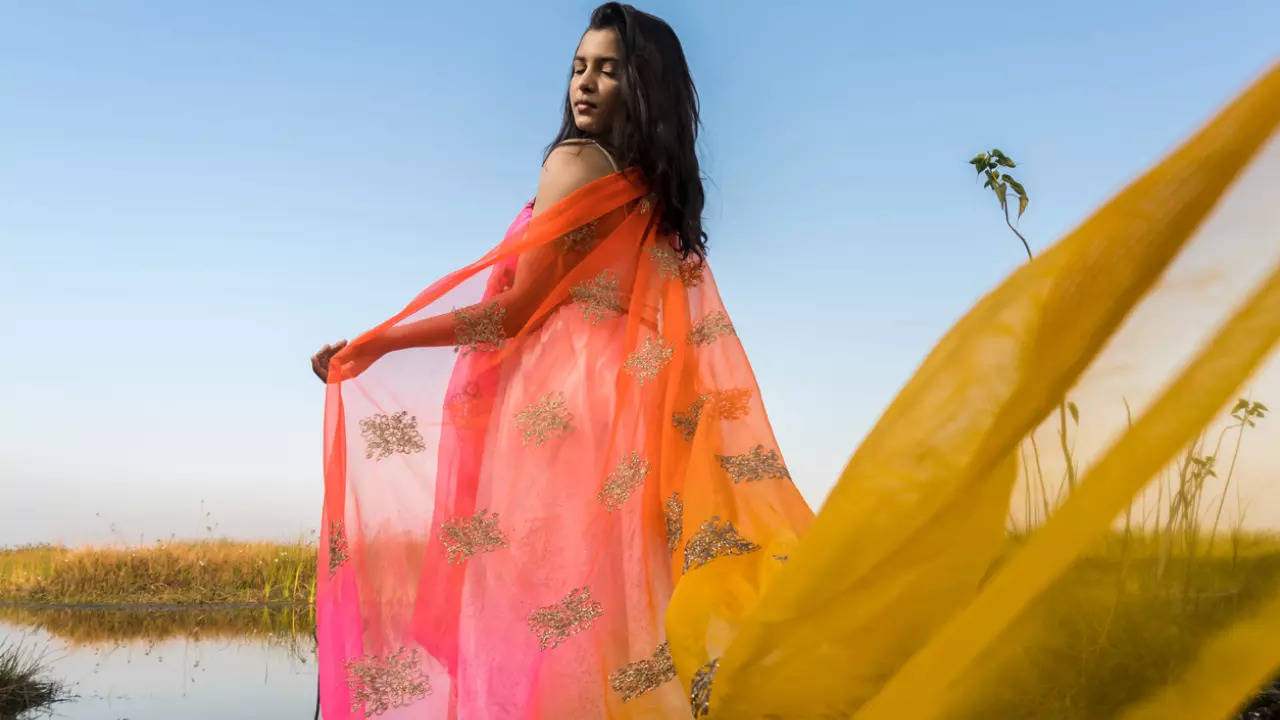Banarasi Sari (Uttar Pradesh): Banarasi saris are renowned for their opulence and intricate designs.
They are crafted in Varanasi (formerly known as Banaras) in Uttar Pradesh. These saris often feature gold or silver brocade work, floral motifs, and intricate weaving patterns, making them one of the most sought-after choices for weddings and special occasions.
Kanjeevaram Sari (Tamil Nadu): Hailing from the town of Kanchipuram in Tamil Nadu, Kanjeevaram saris are famous for their vibrant colors, heavy silk fabric, and exquisite zari work. These saris often have temple-inspired designs, checks, stripes, and floral patterns. They are a popular choice for South Indian weddings and festivals.
Bandhani/Bandhej Sari (Gujarat and Rajasthan): Bandhani saris are tie-and-dye textiles that come in a variety of colors and patterns. They are made by tying small portions of the fabric with threads and then dyeing it to create intricate patterns. These saris are commonly worn in Gujarat and Rajasthan during festivities and weddings.
Patola Sari (Gujarat): Patola saris are another exquisite textile from Gujarat. These saris are handwoven using the double ikat technique, where both the warp and weft threads are tie-dyed before weaving. Patola saris are known for their geometric patterns and vibrant colors.
Chanderi Sari (Madhya Pradesh): Chanderi saris originate from the town of Chanderi in Madhya Pradesh. These lightweight and sheer saris are usually made with silk, cotton, or a blend of both. They are known for their delicate zari borders and floral or geometric motifs.
Assam Silk (Assam): Assam is famous for its rich silk saris, particularly the Muga silk and Eri silk varieties. Muga silk saris have a natural golden hue and are highly durable, while Eri silk saris are soft and warm. Both are adorned with traditional Assamese designs.
Bengali Tant Sari (West Bengal): Tant saris are popular in West Bengal and are usually made from cotton. They are known for their lightness and comfort, making them suitable for everyday wear. Tant saris often feature striped or checkered patterns in vibrant colors.
Paithani Sari (Maharashtra): Paithani saris are from Maharashtra and are crafted with lustrous silk and gold thread work. They are characterized by their intricate peacock and floral motifs, often with a contrasting border.
Sambalpuri Sari (Odisha): Sambalpuri saris hail from Odisha and are known for their unique tie-and-dye patterns called “Ikat.” They come in a wide range of colors and designs and are often made with both cotton and silk threads.
These are just a few examples of the diverse regional saris found across India. Each sari carries its own cultural significance and craftsmanship, making them an integral part of the country’s cultural tapestry.


